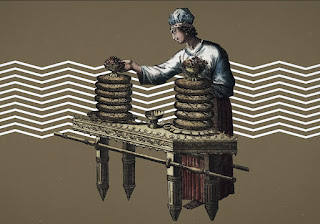THE LIVES OF THE PATRIARCHS #211 | THE LIFE OF MOSES #192
Pastor Christopher Choo
Lesson 3897
THE LIVES OF THE PATRIARCHS #211
THE LIFE OF MOSES #192
MOSES AT MT.SINAI#91
THE TABERNACLE OF MOSES ( Part 50)
THE TABLE OF SHOWBREAD IN THE TABERNACLE OF MOSES #4
FURTHER INSIGHTS RE THE SHOWBREAD.
1. In Exodus 25:30; 35:13; 39:36) the Showbread is literally "bread of the face" or "faces."
Show-bread was unleavened bread placed upon a table that stood in the sanctuary together with the seven-branched candlestick and the altar of incense. (Exodus 25:23-30)
Every Sabbath twelve newly baked loaves, representing the twelve tribes of Israel, were put on it in two rows, six in each, and sprinkled with incense, where they remained till the following Sabbath.
Then they were replaced by twelve new ones, the incense was burned, and they were eaten by the priests in the holy place, out of which they might not be removed.
The title "bread of the face" seems to indicate that bread through which God is seen, that is, with the participation of which the seeing of God is bound up, or through the participation of which man attains the sight of God whence it follows that we have not to think of bread merely as such as the means of nourishing the bodily life, but as spiritual food as a means of appropriating and retaining that life which consists In seeing the face of God.
2.This bread was like a food offering, which ancient pagans gave for their gods to dine upon. Yet Israel was not a pagan nation, so the one, true creator God, having no need to eat to sustain Himself, gave it back to “Aaron and his sons” who ate it in His holy presence (v. 9).
Dining with someone in the ancient Near East was a sign of fellowship and peace, so the priests’ eating of the bread of the Presence in God’s house signified the Lord was at peace with His people. Yet this was a limited peace under the old covenant because only the priests, not every Israelite, enjoyed the privilege of dining with the Creator.
Under the new covenant, however, Christ has effected an eternal peace between the Father and His people, so we may dine in His presence, especially when we partake of the sacrament of the Lord’s Supper at His table (John 6:53–58).
3. The Showbread was a continual reminder to the worshippers of the truth that man does not live by bread alone, emphasized by the fact that these holiest offerings were afterward eaten.
It was the Old Testament version of the prayer, "Give us this day our daily bread"; and in the fact that the holy table was never for a moment left without some loaves lying on it, we have the symbol of man's continued and unbroken dependence upon God.
Even during the travels of the table of shewbread with the tabernacle, the "continual bread" was required to be in its place thereon (Numbers 4:7).
4. Few notices that the Showbread was sprinkled with frankincense - one of the gifts given by the wise men from the East to the infant Jesus.
Frankincense denotes the preservative power of the Holy Spirit.
This minor miracle of preservation is there as the tent of meeting was closed up and in the hot desert air, the bread will decompose. But thanks to the glory cloud over the Tabernacle and the preservative power of frankincense the 12 loaves could still be eaten by the priests before fresh supplies came to every Sabbath as replacements.
These priests who ate on behalf of the people denoted the shared union and communion of a covenantal meal between God and His people.
Conclusion
It can be easy to take God’s provision of food for granted, but we must always remember that we are sustained only on account of His gracious work to meet every one of our needs.
He gives us what we need according to His standards, and we must never forget this both in times of plenty and in times of want.
Let us do what we can to cultivate an attitude of thankfulness to God for His supply and encourage others to do the same.







